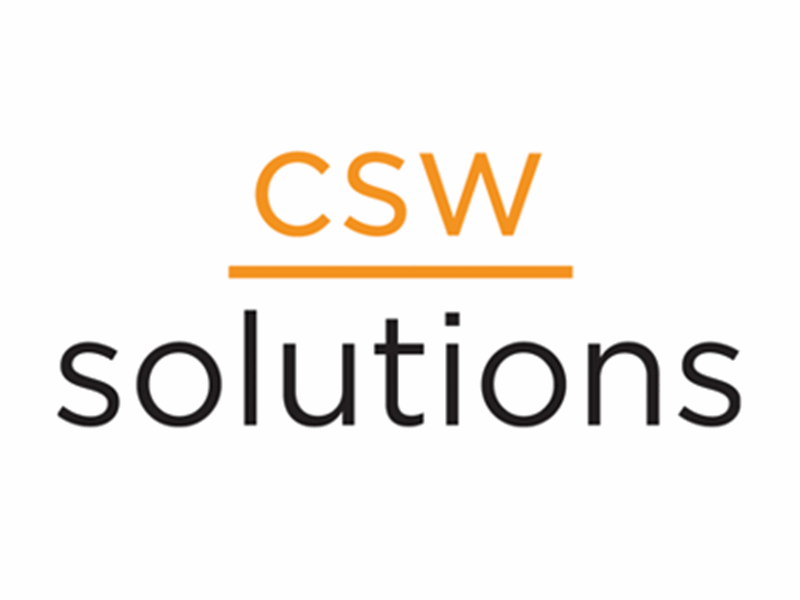For more information on your charming neighborhood CSW Solutions, visit us at our home or subscribe to our newsletter! We also do that social networking thing at: Twitter, Facebook, Linkedin, and Instagram! Check out our #funfactfridays
Mastering Azure Integration: Environment and Business Process Tracking Insights
In today's data-driven landscape, staying ahead of the curve requires powerful solutions. Azure Integration emerges as a champion, effortlessly connecting your diverse systems and applications. However, unleashing its true potential demands more than technical prowess; it requires a deeper understanding of the environment and business process insights it unlocks.
More and more businesses are turning to Azure Integration as a way to streamline their operations and improve their overall performance. It is important that businesses understand how this powerful tool can be utilized to manage Azure Integration Services with business-level groupings. This means that companies can easily track and monitor their various systems in a cohesive way, providing valuable insights and streamlining processes.
This blog post serves as your guide to mastering Azure Integration and leveraging its power to optimize your business. We'll explore how it simplifies operations, delivers valuable insights, and empowers data-driven decision-making. Whether you're a budding startup or an established enterprise, this journey will equip you with the knowledge and tools needed to unlock Azure Integration's full potential and propel your business towards unprecedented success.

Azure Integration Environment is a tool provided by Microsoft Azure that aims to streamline and manage Azure Integration Services with business-level groupings. This tool is designed to simplify the process of managing and organizing integration services within an Azure environment, making it easier for businesses to effectively manage their integration workflows.
The primary goal of Azure Integration Environment is to provide a centralized platform for managing various integration services, such as logic apps, API management, and event grids. By grouping these services based on business needs, organizations can easily organize and manage their integration workflows in a more efficient manner.
One of the key features of Azure Integration Environment is its ability to create business-level groupings. These groupings allow businesses to categorize and organize their integration services based on specific business requirements or projects. This can help streamline the management process by providing a clear overview of the different integration services being used and their respective purposes.
With Azure Integration Environment, businesses can also take advantage of advanced monitoring and analytics capabilities. This includes real-time monitoring of integration workflows, tracking the performance of different services, and generating detailed reports on integration activity. This can help businesses identify bottlenecks, optimize performance, and ensure that integration workflows are running smoothly.
Another important aspect of Azure Integration Environment is its integration with other Azure services and tools. Businesses can leverage the power of Azure Logic Apps, Azure API Management, and other related services within the environment to build powerful integration workflows. This seamless integration allows for greater flexibility and scalability when designing and deploying integration solutions.
Azure Integration Environment: Resource Management and Business Context Integration
When it comes to resource management and business context integration for Azure, there are several approaches that can be taken. One approach is to utilize Azure Resource Manager (ARM) templates, which allow you to define and deploy your infrastructure and applications as code. With ARM templates, you can easily manage and update your resources in a consistent and repeatable manner.
Another approach is to utilize Azure Logic Apps, which provide a way to automate and orchestrate business processes and workflows. Logic Apps allow you to integrate different systems and services together, enabling you to build powerful and scalable solutions.
Additionally, Azure provides various monitoring and management tools that can help you effectively manage your resources. For example, Azure Monitor allows you to collect and analyze telemetry data from your applications and infrastructure, providing insights into performance and health. Azure Advisor provides recommendations and best practices for optimizing your resources, while Azure Cost Management helps you track and control your cloud spending.
When integrating your business context into Azure, it is important to consider factors such as security, compliance, and scalability. Azure provides a range of security features, such as Azure Active Directory for identity and access management, Azure Security Center for threat detection and response, and Azure Information Protection for data protection. Compliance certifications and frameworks, such as GDPR and HIPAA, can also be leveraged to ensure regulatory compliance. Scalability can be achieved through the use of Azure Autoscale, which automatically adjusts the capacity of your resources based on demand.
Azure Integration Environment: Challenges and Limitations
The Azure Integration Environment (AIE) is a powerful tool that allows businesses to integrate their applications and systems in the cloud. However, like any technology, AIE has its own set of challenges and limitations that can impact its effectiveness and usability.
One limitation of AIE is the restrictions on resource grouping. Currently, AIE only supports a single Integration Service Environment (ISE) per resource group. This can be problematic for organizations that need to separate their integration environments for different projects or departments. To overcome this limitation, organizations can create multiple resource groups and deploy separate ISEs for each environment.
Another challenge is the monitoring setup in AIE. While AIE provides some monitoring capabilities, it lacks advanced features such as custom metrics and alerts. This can make it difficult for organizations to effectively monitor and troubleshoot their integration workflows. To address this challenge, organizations can leverage Azure Monitor and Application Insights to gain more visibility into their AIE deployments and set up custom monitoring and alerting rules.
The service support for the AIE is also not as extensive as for other Azure services. While there are resources and documentation available, it may be more challenging to find specific solutions or get support for complex integration scenarios.
To overcome these challenges, there are alternative solutions that can be considered. One option is to leverage Azure Resource Manager templates to create custom resource groups and organize resources based on the needs of the organizations. This can provide more flexibility and control over resource management within the integration environment.
In terms of setup and monitoring, users can explore third-party tools and services that provide enhanced monitoring and troubleshooting capabilities. These tools offer more advanced features such as real-time monitoring, alerting, and performance optimization. By using these tools, organizations can gain better visibility into their integration environment and proactively address any issues.

Introduction to Business Process Tracking
Business Process Tracking is a method of monitoring and analyzing the various processes within a business in order to improve efficiency and productivity. It involves tracking and analyzing the flow of tasks, data, and information as they move through different stages of a business process.
The main functionality of Business Process Tracking is to provide visibility into how processes are performing, identify bottlenecks or inefficiencies, and make data-driven decisions to optimize processes. It allows businesses to track key performance indicators (KPIs), monitor process metrics, and generate reports to gain insights into process performance and identify areas for improvement.
To define business processes in Business Process Tracking, you need to identify the specific tasks, activities, and steps involved in completing a particular process. This can be done by mapping out the process flow, documenting the responsibilities of each role or department involved, and determining the inputs and outputs of each stage.
Identifiers are used to differentiate between different instances of a process. They can be unique identifiers such as order numbers or customer IDs that allow businesses to track and trace individual process instances.
Stages represent the different phases or steps within a business process. Each stage represents a specific set of activities or tasks that need to be completed before moving on to the next stage. Stages can be sequential or parallel, depending on the nature of the process.
Properties are used to capture additional information about the process or specific stages. They can include data fields that capture inputs, outputs, deadlines, or other relevant information. Properties can be used to define rules or conditions for specific stages or trigger notifications or escalations.
By defining business processes, identifiers, stages, and properties in Business Process Tracking, businesses can gain a comprehensive view of their operations and identify areas for improvement. This allows them to streamline processes, reduce costs, and ultimately enhance customer satisfaction and overall business performance.
Overcoming Business Process Tracking Limitations
The current release of business process tracking has several limitations that need to be addressed, particularly in the areas of service support, monitoring, and functionality.
One limitation is the lack of comprehensive service support. The current system does not provide sufficient tools for tracking and managing service requests, leading to delays and inefficiencies in resolving customer issues. Additionally, there is a lack of integration with other service management systems, making it difficult to streamline processes and provide a seamless customer experience.
Another limitation is the limited monitoring capabilities. The current system provides basic monitoring features, but lacks advanced analytics and real-time reporting. This makes it challenging to identify bottlenecks and optimize processes for maximum efficiency. It also hinders the ability to proactively identify and address issues before they impact business operations.
Functionality is also a concern in the current release. There are gaps in the system's ability to handle complex workflows and automate tasks. This results in manual interventions and increased manual errors, reducing productivity and increasing the risk of process failures.
To overcome these limitations, advanced end-to-end tracking and monitoring solutions can be implemented. These solutions should provide comprehensive service support by integrating with existing service management systems and offering tools for tracking and managing service requests. They should also include advanced analytics and real-time reporting capabilities, enabling organizations to gain insights into process performance and make data-driven decisions for improvement. Additionally, the solutions should offer robust workflow automation capabilities to streamline processes and reduce manual interventions.
Summary
Understanding Azure Integration Environment and Business Process Tracking is crucial for Azure and hybrid integrations. Azure Integration Environment allows businesses to seamlessly connect different applications and services, enabling efficient data flow and communication. It provides a centralized platform for managing integrations, making it easier to monitor and troubleshoot any issues that may arise. By understanding Azure Integration Environment, businesses can streamline their workflows, improve productivity, and enhance customer experiences.
Business Process Tracking is equally important as it enables businesses to gain insights into their integration processes. It allows businesses to track the flow of data and monitor the progress of various business processes. This visibility helps in identifying bottlenecks, optimizing workflows, and making informed decisions. By understanding Business Process Tracking, businesses can ensure smooth and efficient operations, leading to better performance and outcomes.
For Azure and hybrid integrations, understanding Azure Integration Environment and Business Process Tracking is essential for maximizing the benefits of these technologies. By understanding these limitations and exploring alternative solutions, organizations can effectively overcome these challenges and achieve successful integration in their Azure environment. It empowers businesses to leverage the full potential of Azure and hybrid integrations, driving innovation, efficiency, and growth. Businesses can improve service support, enhance monitoring capabilities, and extend functionality to achieve greater efficiency and effectiveness in their business processes.
As a cloud-focused company, we also understand the importance of security and remote work capabilities. That's why our team specializes in cloud security and offers services such as code audits and Cloud Readiness Assessments to ensure that our clients' data is always safe and accessible from any location.
